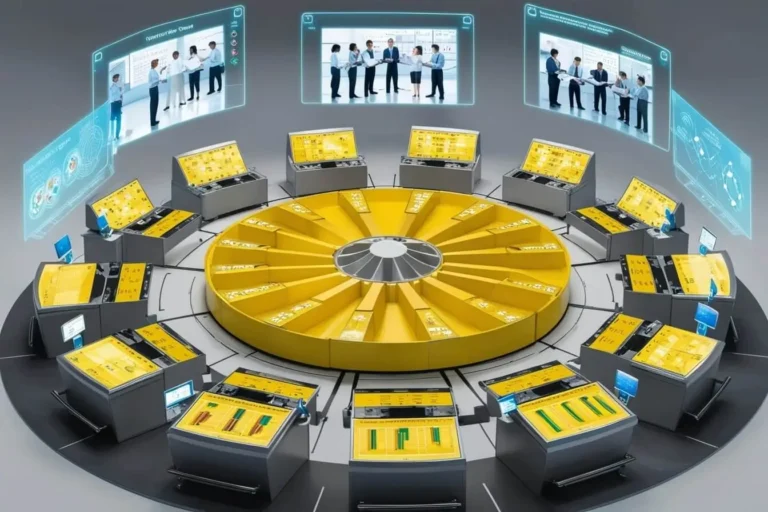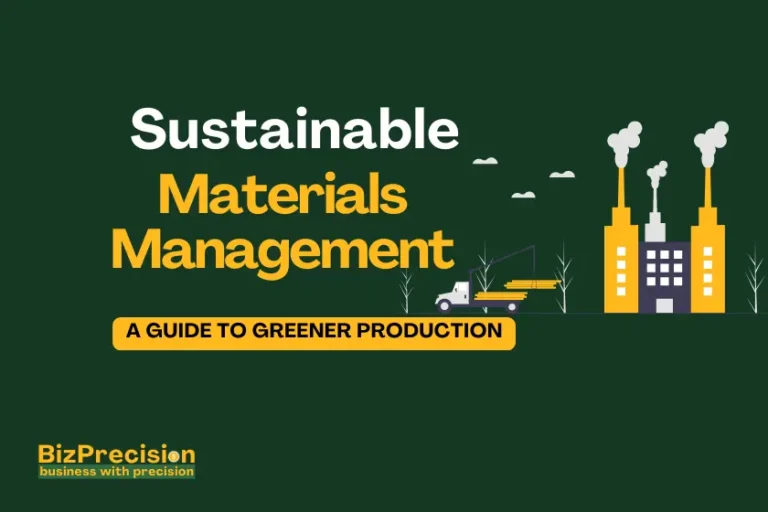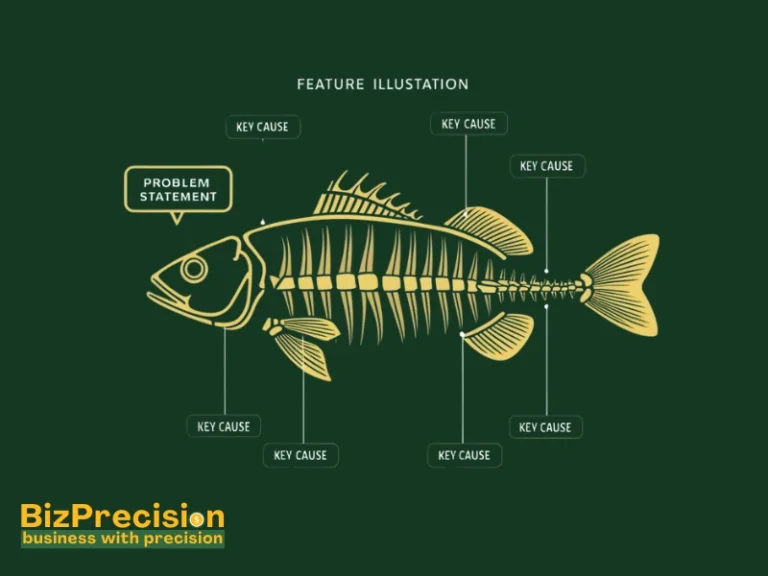Lean Manufacturing: Streamlining Operations for Maximum Efficiency and Profit
Lean manufacturing is a powerful approach that has revolutionized the way businesses operate. This guide delves into its core principles, explores valuable tools and techniques, and offers practical steps for implementation. Imagine running a production line so efficient that waste is nearly nonexistent, quality is at its peak, and customer satisfaction soars. That’s the power of lean manufacturing. Whether you’re a seasoned manufacturer or just starting out, lean practices can significantly enhance your efficiency, quality, and customer satisfaction.
Introduction to Lean Manufacturing
What is Lean Manufacturing?
Lean manufacturing systematically eliminates waste and maximizes value in the production process. It prioritizes the customer’s perspective, identifying activities that directly add value to the final product and eliminating those that don’t. Effective material management can further enhance lean operations by ensuring that materials are handled efficiently, reducing waste, and ensuring timely availability.
History and Evolution
The roots of lean manufacturing can be traced back to early 20th-century Japan, with the pioneering work of Taiichi Ohno at Toyota. Focused on continuous improvement (Kaizen), Ohno’s system aimed to eliminate the “seven wastes” from production: overproduction, transportation, waiting, over-processing, inventory, defects, and unused employee talent. Lean principles have since evolved and spread globally, becoming a cornerstone of modern manufacturing excellence. Understanding the historical context of lean manufacturing helps appreciate its significance in today’s competitive market.
Importance in Modern Industry
In today’s competitive market, lean manufacturing offers a strategic advantage. By optimizing processes and minimizing waste, businesses can reduce costs, improve product quality, and deliver faster turnaround times. This translates to increased customer satisfaction, a stronger competitive edge, and improved profitability.
Core Principles of Lean Manufacturing
Lean manufacturing rests on five core principles that guide every aspect of the production process.
Value:
The foundation of lean is understanding what truly matters to the customer. What features and functionalities define value for them? By prioritizing these aspects, manufacturers can tailor their processes accordingly.
Value Stream:
The entire flow of activities required to bring a product from raw materials to the customer is the value stream. Lean practices involve analyzing this stream, identifying bottlenecks and non-value-adding activities, and optimizing the flow for maximum efficiency.
Flow:
Lean strives for a smooth and continuous flow of materials and information throughout the production process. This eliminates delays, reduces waiting times, and ensures a steady output.
Pull:
Traditional manufacturing often pushes products through production lines based on forecasts. Lean, however, adopts a pull system. Products are only produced when there’s a confirmed customer demand, minimizing excess inventory and ensuring production aligns with actual needs.
Perfection:
Lean is a philosophy of continuous improvement. The goal is to constantly strive for perfection by identifying and eliminating any inefficiencies that creep into the process. This ongoing pursuit of excellence ensures long-term success.
Essential Lean Manufacturing Tools for Efficiency
Lean manufacturing offers a toolbox of powerful tools and techniques to help businesses achieve their goals. Let’s explore some of the most common ones:
5S Methodology
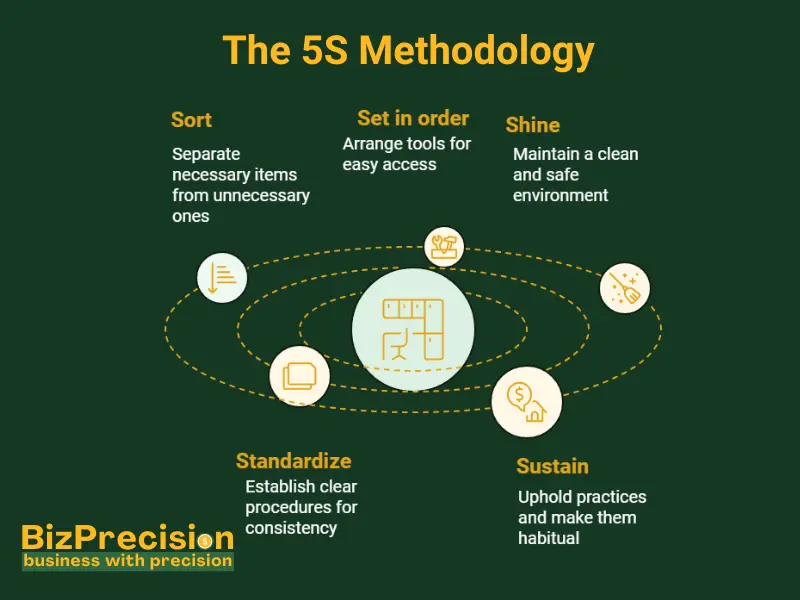
The 5S methodology is a foundational lean tool that focuses on creating a clean, organized, and efficient workspace. The five S’ stand for:
- Sort: Separate necessary items from unnecessary ones and discard what’s not needed.
- Set in order: Arrange tools, materials, and equipment in a designated and orderly manner for easy access.
- Shine: Regularly clean and maintain the workplace to ensure a safe and healthy environment.
- Standardize: Establish clear procedures and routines for each task to ensure consistency.
- Sustain: Continuously uphold the established practices and make them a habit.
Kaizan:
Meaning “continuous improvement” in Japanese, Kaizen is a core philosophy of lean. It encourages everyone within the organization to constantly identify and implement improvements, no matter how small.
Kanban:
A visual scheduling system, Kanban uses cards or boards to represent work in progress. It helps visualize workflow, identify bottlenecks, and ensure smooth production flow.
Value Stream Mapping (VSM):
This technique visually maps the entire flow of materials and information in the production process. It helps identify areas for improvement and optimize the value stream for efficiency.
Just-in-Time (JIT):
This inventory management system aims to minimize waste by having materials and components delivered only when needed for production. This reduces storage costs and ensures materials are fresh and high-quality.
Six Sigma:
A data-driven approach focused on minimizing defects and improving quality. Six Sigma uses statistical analysis to identify and eliminate variations in the production process that lead to errors.
By incorporating these tools and techniques, manufacturers can streamline their operations, reduce waste, and enhance overall efficiency. For instance, Toyota’s implementation of lean principles led to a 40% reduction in production costs and a significant increase in customer satisfaction.
Steps to Implement Lean Manufacturing
Transforming a manufacturing operation into a lean one requires a well-defined approach. Here’s a breakdown of the key steps:
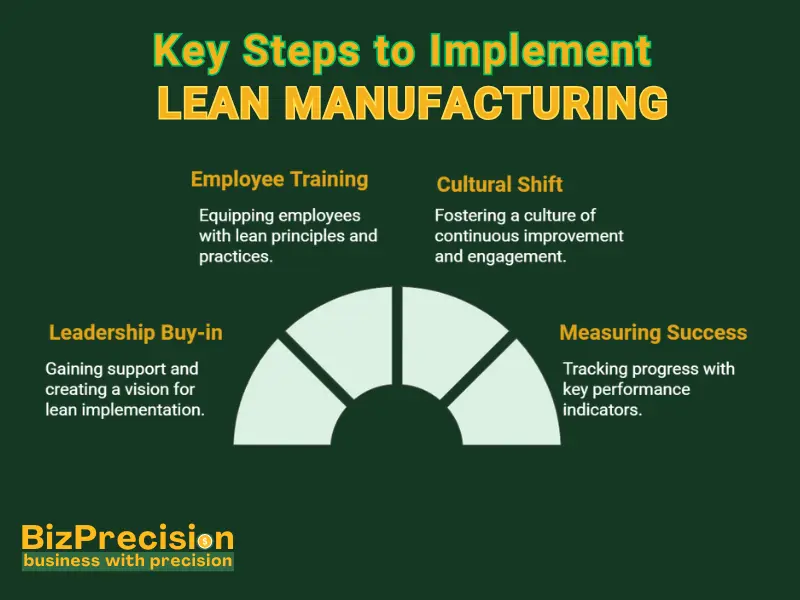
1. Getting Started:
The first step is to gain leadership buy-in and create a clear vision for implementing lean principles. This involves educating key stakeholders and developing a roadmap for change.
2. Training and Development:
Equip your employees with essential lean practices knowledge because they are the backbone of any lean transformation. Training programs should cover the core principles, tools, and techniques of lean manufacturing.
3. Cultural Change:
Lean is more than just a set of tools; it’s a cultural shift. Fostering a culture of continuous improvement, problem-solving, and employee engagement is essential for long-term success.
4. Measuring Success:
Tracking progress and measuring the impact of lean initiatives is vital. Key performance indicators (KPIs) like cost reduction, quality improvement, and lead time
Measuring the Impact of Lean Manufacturing
Key Performance Indicators (KPIs)
To understand the effectiveness of lean manufacturing, we use KPIs. These metrics show how well the processes are working. Common KPIs include:
- Cycle time
- Defect rates
- Inventory levels
By tracking these, we can see improvements or issues.
Cost Reduction
One main goal of lean manufacturing is to cut costs. We do this by removing waste and improving efficiency. We track savings by comparing current costs to past expenses. Lean practices often lead to lower production costs, which boosts profits.
Quality Improvements
Enhancing product quality is essential in lean manufacturing. We measure quality by tracking defect rates and customer returns. A lower defect rate means better quality. Techniques like Six Sigma quickly identify and resolve quality problems, ensuring our products meet the highest standards.
Efficiency Gains
After enhancing product quality, the next crucial step in lean manufacturing is improving efficiency. We measure efficiency by looking at production time and resource use. Shorter production times and better use of materials indicate higher efficiency. Lean practices help streamline workflows and reduce delays.
Customer Satisfaction
Customer satisfaction is crucial for business success. We measure it through surveys, feedback, and repeat business. High satisfaction often means fewer defects and faster delivery. Lean manufacturing helps meet customer needs by improving product quality and service speed.
Challenges and Solutions in Lean Manufacturing
Common Challenges
Implementing lean manufacturing comes with challenges. Common issues include resistance to change, lack of training, and inadequate resources. These obstacles can slow down or hinder the lean transformation process.
Overcoming Resistance
Getting employees on board is vital for success. To overcome resistance, we use clear communication and involve employees in the process. Training programs and workshops help employees understand the benefits of lean practices. Involving staff in decision-making fosters a sense of ownership and commitment.
Sustaining Lean Practices
Maintaining lean practices over time can be tough. Continuous improvement is key. Regular audits and reviews help identify areas for improvement. We use feedback loops to make ongoing adjustments. Leadership support and employee engagement are crucial for sustaining lean practices.
Case Studies Of Successful Lean Implementations Across Various Industries
Case Study 1: Furniture Maker Finds Flow
Once drowning in inventory and wasted time, Pinewood Products faced closure. Implementing Lean, they cut lead times by 50%, reduced inventory by 70%, and witnessed a 30% profit surge. The key? Kanban boards streamlined workflow, while 5S organization banished waste. Now, Pinewood thrives, a testament to the power of focused effort.
Ref: Liker, 2004, The Toyota Way, McGraw-Hill
Case Study 2: Healthcare Giant Streamlines Service
Overwhelmed by patient wait times and frustrated staff, City General Hospital embraced Lean. The 5S organization decluttered waiting areas, while value stream mapping identified bottlenecks. The result? A 40% reduction in patient wait times, improved staff morale, and a 15% increase in patient satisfaction. City General is now a model for patient-centric care, proving that Lean can revolutionize even complex service sectors.
Ref: Spear & Bowen, 1999, Decoding the DNA of the Toyota Production System, Harvard Business Review
Case Study 3: Automotive Supplier Sheds Excess
Struggling with quality issues and production delays, GearTech embraced Lean. Kaizen teams tackled problems head-on, while value stream mapping revealed hidden inefficiencies. Defective rates plummeted by 65%, production times dropped by 40%, and customer satisfaction soared. GearTech is now a trusted supplier, demonstrating that Lean can transform even entrenched industries.
Ref: Womack & Jones, 1996, Lean Thinking, Simon & Schuster
Embark on your own Lean journey today. Embrace these success stories as inspiration, and find your path to a more efficient, profitable, and fulfilling future.
The Future of Lean Manufacturing
Lean Manufacturing and Industry 4.0
Industry 4.0 brings advanced technologies to lean manufacturing. Integration with IoT, AI, and big data enhances lean processes. Smart factories use real-time data to improve decision-making. This combination boosts efficiency and reduces waste even further.
Emerging Trends
New trends in lean manufacturing are always developing. These include using augmented reality for training and maintenance. Another trend is the increased use of automation and robotics. These technologies help streamline processes and reduce human error.
Sustainability and Lean
Lean principles support environmental sustainability. By reducing waste and improving efficiency, lean manufacturing lowers the environmental impact. Sustainable practices include recycling, energy-saving methods, and using eco-friendly materials. Lean manufacturing promotes a greener, more sustainable future.
FAQ’s
Conclusion
Lean manufacturing remains vital in today’s industry. It helps businesses stay competitive by improving processes and reducing waste. As new technologies emerge, lean practices will continue to evolve. By embracing lean principles, companies can achieve long-term success and contribute to a sustainable future.
Lean manufacturing is not just a trend; it’s a proven method for improving business operations. Whether you’re in the medical, aerospace, or software industry, lean practices can help. By focusing on quality, efficiency, and customer satisfaction, lean manufacturing offers a path to success. So, take the first step towards a leaner, more efficient future for your business.




